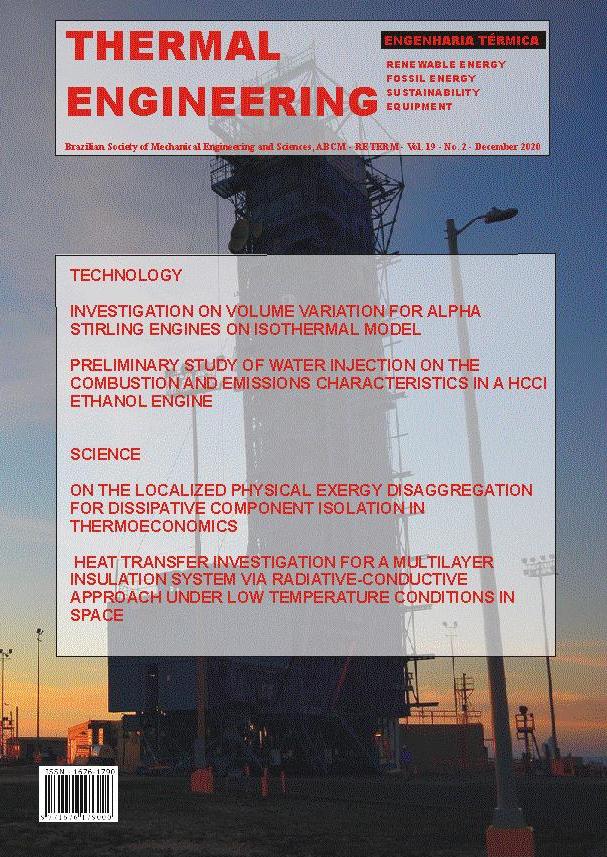HEAT TRANSFER INVESTIGATION FOR A MULTILAYER INSULATION SYSTEM VIA RADIATIVE-CONDUCTIVE APPROACH UNDER LOW TEMPERATURE CONDITIONS IN SPACE
DOI:
https://doi.org/10.5380/reterm.v19i2.78624Keywords:
heat transfer, numerical analysis, multilayer insulation, radiative-conductive approachAbstract
Thermal insulation is an important area, not restricted to mechanical engineering, but widely studied in environmentalissues, such as global warming and, above all, energy-saving, since controlling the heat flux on microprocessorsthrough temperature control on components in space applications. This work focuses on controlling the temperature incomponents that could not lose or gain so much heat in space, especiallywhen the overall safety of sending satellites onspecific missions is required. To ensure that, Multilayer Insulation (MLI) is used. With fluid mechanics and radiation-conductionheat transfer theory, it was possible to calculate the transient and stationary temperature field and heat flux inMLI. The boundary temperatures are specified at 300K and 4K. The results, from solving the resulting discretized ODE,simulated with fsolve and odeintScipy subroutines in Python, able to solve the equations numerically, were shown. Thedata given by the simulation was able to indicate the impacts of varying the layer density, emissivity of screen, the distancebetween screens and the perforation coefficient in stationary and transient approaches. A way to simulate the performanceof MLI numerically was presented. Modifying emissivity (e) showed variations higher than in the perforation coefficient(ξ). Layer density controls the distance between layers (d
), changing the conduction heat transfer. In the transient casesimulation, it was possible to notice that varying parameters impact in time to reach steady-state and final temperature.
Downloads
Published
How to Cite
Issue
Section
License
Direitos Autorais para artigos publicados nesta revista são do autor, com direitos de primeira publicação para a revista. Em virtude da aparecerem nesta revista de acesso público, os artigos são de uso gratuito, com atribuições próprias, em aplicações educacionais e não-comerciais.



